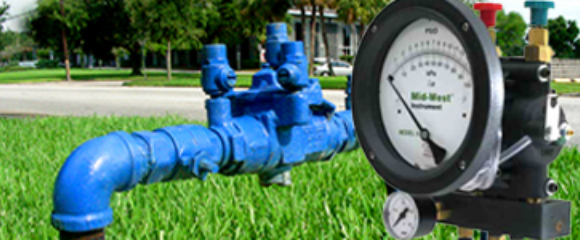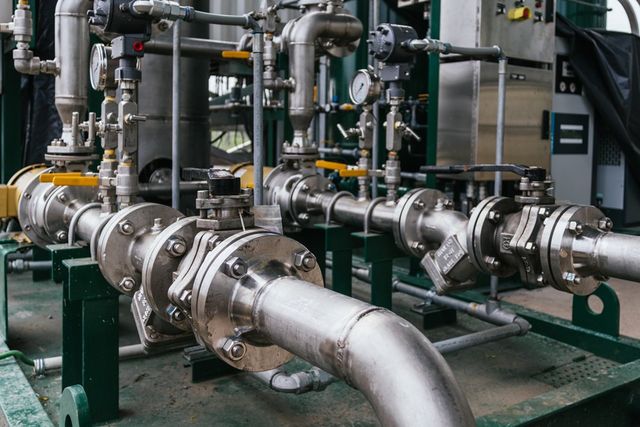Should I Carry out Backflow Testing on My Water Supply?
Should I Carry out Backflow Testing on My Water Supply?
Blog Article
What're your opinions regarding Backflow Prevention?

Yes, you require to backflow test your residence's supply of water to ensure that the water is without contaminants as well as unsafe degrees of chemicals. You need to not attempt to execute backflow testing on your very own because of the tools required as well as room for mistake. We recommend that you call a specialist plumber every couple of years to check your water.
What is Heartburn?
Simply put, heartburn is when water moves upwards-- the contrary direction in the plumbing system. This is likewise referred to as "backpressure." When the water relocates this instructions, it can mix with unsafe toxins and present a threat.
What Creates Backflow?
A typical reason for backflow is a loss of water stress that triggers the water to siphon back into the water supply. An instance is clearing out a paint bucket using a tube. You fill up the paint bucket up with water, leaving the tube in the container. After a long time, there is a loss in water stress as well as the hose starts to suck the water back into the water supply. As you can picture, there are currently chemicals from the paint that are getting in the supply of water, potentially posturing a threat. Unfortunately, many people are not even knowledgeable about backflow testing, but there are several reasons that it's so vital.
Heartburn Screening is Required by Legislation in Certain Cities
Depending upon where you live, you may in fact be needed by legislation to backflow examination your regulation. For example, Iowa City keeps a document of all buildings served by the city's water. The city needs that specific "high-hazard" centers go through heartburn testing. Sometimes, houses such as houses as well as apartment are affected.
You Can Stop Heartburn
Hazardous heartburn is easily avoidable if you have a professional plumber mount a heartburn tool. If there is an energetic risk, the plumber will likewise evaluate for heartburn and also figure out. The main objective of a backflow tool is to prevent water from streaming backward into your water supply. Plumbing professionals set up the gadget on the pipelines in your house to make sure that the water only streams in the correct instructions.
Backflow Can Influence Both You as well as Your City
Numerous cities develop backflow guidelines due to the fact that hazardous heartburn can affect the general public water supply in addition to a single structure. Modern cities have backflow tools in place that safeguard the water supply that comes from many homes as well as business homes. The real risk comes from irrigation systems, which can damage the water system with poisonous plant foods, manure, and various other chemicals.
Call a Plumber to Check for Backflow Prior To It is Far too late
While it might sound grim, infected water can cause awful microbial and viral infections that are tough to treat. A plumbing business can swiftly examine your house's water to establish if there are any type of unsafe chemical levels. If you can prevent the anguish that comes from consuming infected water, the little investment is. As well as if you do find that your water has high levels of contaminants, a plumber can quickly install a backflow prevention tool.
Yes, you require to backflow examination your home's water supply to guarantee that the water is totally free of toxins and also unsafe degrees of chemicals. A regular cause of heartburn is a loss of water stress that triggers the water to siphon back right into the water supply. After some time, there is a loss in water stress and the pipe begins to suck the water back right into the water supply. The primary function of a backflow gadget is to stop water from streaming in reverse right into your water supply. Numerous cities develop heartburn guidelines due to the fact that unsafe backflow can impact the public water supply in enhancement to a single building.
WHY DOES BACKFLOW TESTING NEED TO BE DONE EVERY YEAR
What Is Backflow?
Toxic gas backing up into a building is one example of potential backflow issues, but backflow can occur in many other ways.
Backflow is generally referred to as the reversal of a liquid or gas in a plumbing system.
Most issues for the public occur with backflow resulting in contaminated drinking water. If you look up backflow issues online you’ll probably find references to “potable” water. That means drinking water.
There have been backflow issues in the past with drinking water. Chemicals, sewage and other contaminants have found their way into drinking water causing health issues for those that count on the fresh water.
What Causes Backflow?
In a residence or commercial building water generally flows one way. This normal flow is usually driven by consistent pressure in the water and waste system.
Anything that changes the normal pressure in the system can lead to backflow.
Fire hydrant use or malfunction can reverse the normal pressure in the system on a city line, but backflow can occur in a number of different ways.
Sometimes backpressure might be caused by someone using a garden hose and submerging the end of the hose in a pool of liquid. If pressure is lost the flow could reverse and contaminants could be released into the drinking water.
Anytime there is a connection between contaminants and the drinking water there is potential for a backflow issue. Sometimes these connections are not immediately obvious like the garden hose connecting to a building’s drinking water supply.
Backflow Regulations
The Environmental Protection Agency (EPA) provides guidelines and regulations for state and local governments regarding backflow. State and local governments also have their own guidelines and regulations for backflow prevention.
Arizona has its own backflow regulations.
Due to issues with backflow in the past, regulations require backflow preventer devices to be used in nearly all residential and commercial buildings.
A backflow preventer is a device that prevents backflow as cross-connection points where potential backflow issues may occur.
While backflow is not a common occurrence, preventers are in place to make sure there is no contamination should something malfunction or go wrong with a building’s water supply.

I found that write up about Is backflow testing necessary? when surfing the web. Sharing is good. Helping others is fun. I praise you for your time. Don't forget to come visit our blog back soon.
Customer Reviews
Report this page